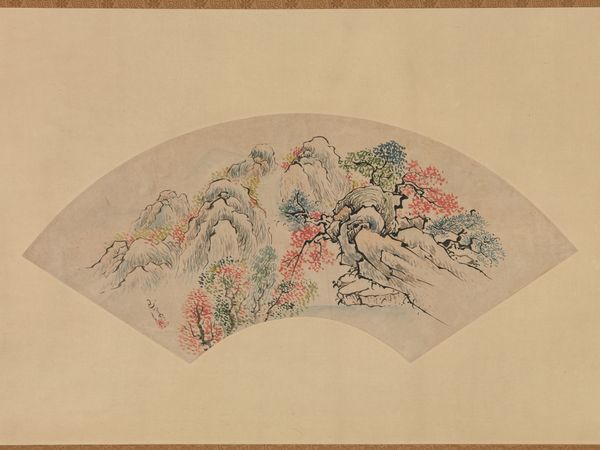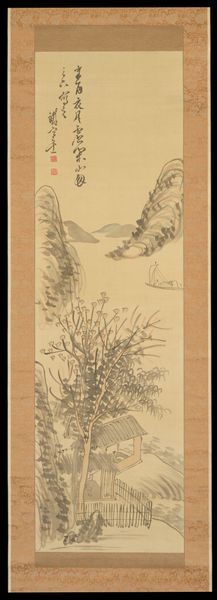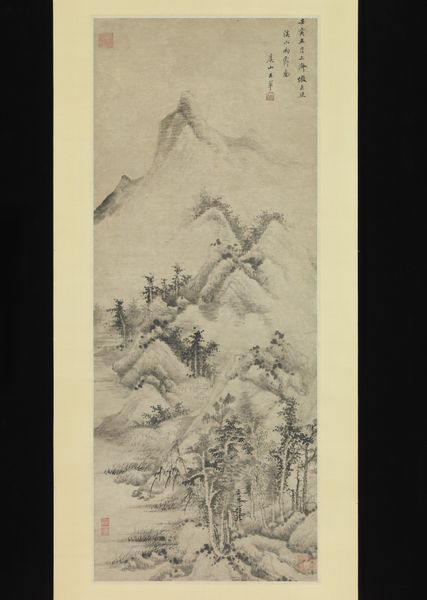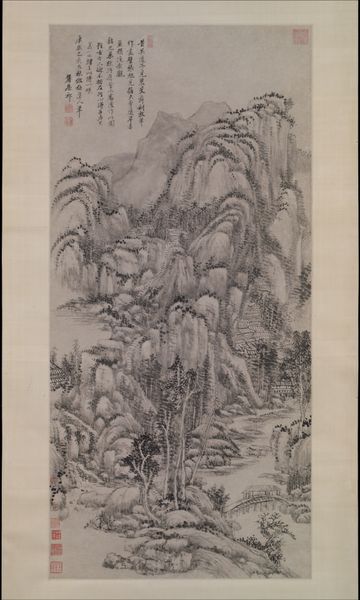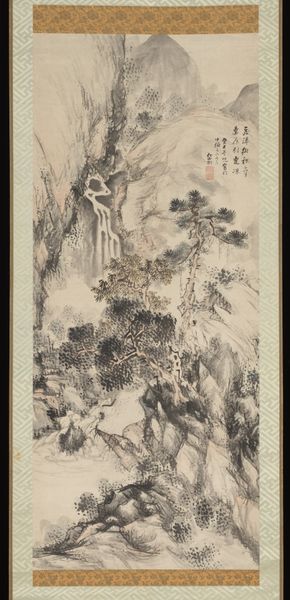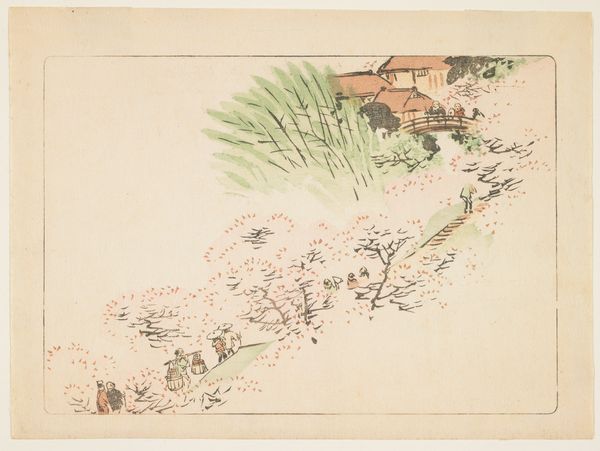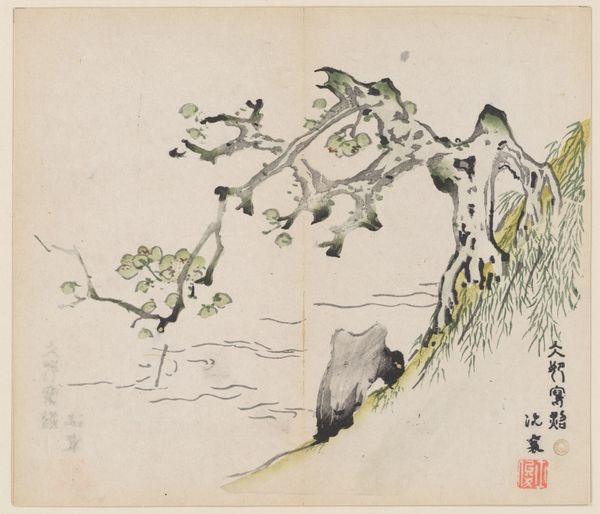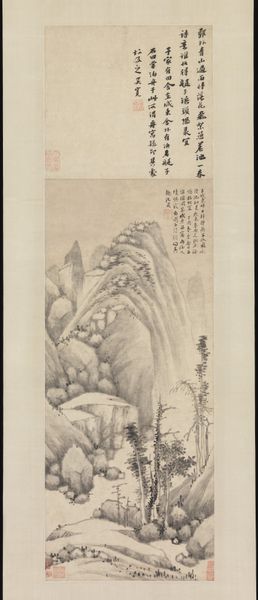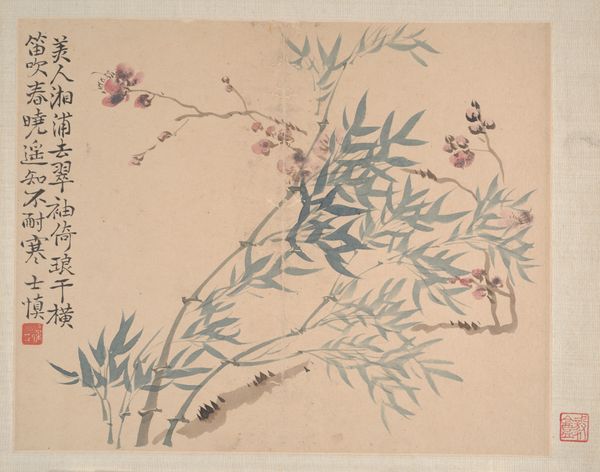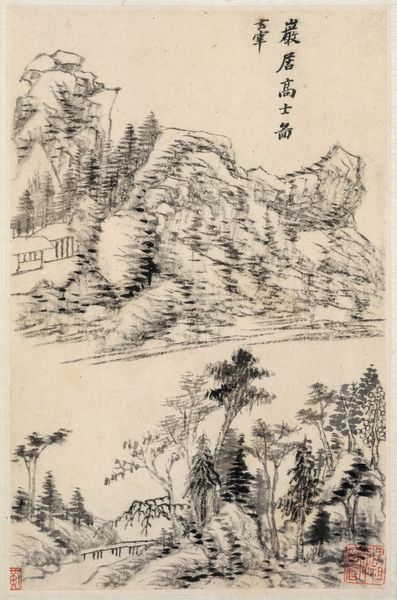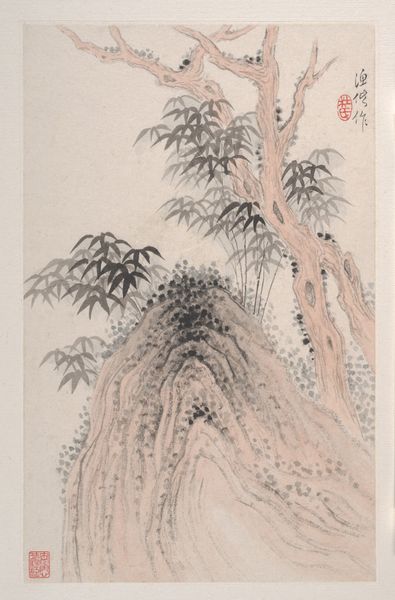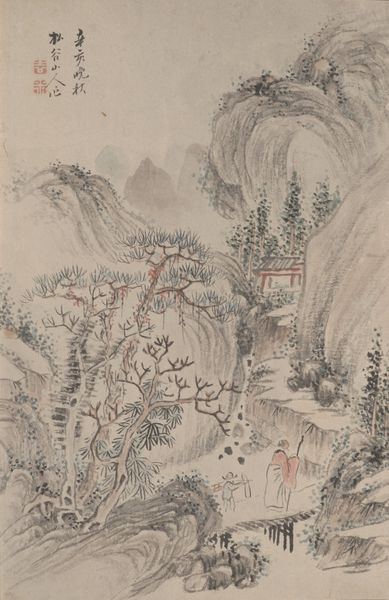
drawing, watercolor, ink
#
drawing
#
asian-art
#
landscape
#
watercolor
#
ink
Dimensions: Image (each): 8 7/8 x 5 7/16 in. (22.5 x 13.8 cm) Overall (album opened): 10 1/2 x 13 5/8 in. (26.7 x 34.6 cm)
Copyright: Public Domain
Editor: This watercolor and ink drawing from the late 18th century, called "Album of Landscape Paintings," is by Kuwayama Gyokushū. It's lovely, but also seems kind of...unstable. What I mean is that the landscape, while beautifully rendered, seems almost precarious, piled upon itself. What's your take on this, looking at it through your expertise? Curator: It is interesting how you mention “precariousness”, in that Gyokushū’s artistic output directly relates to his place within the cultural and economic contexts of Edo period Japan. Consider the materiality of this piece: ink and watercolor on paper, materials accessible to a broad range of artists and patrons, a turn towards *literati* painting traditions accessible to broader social classes that, perhaps, shifted the focus from works dependent on expensive and rare material components. How does this affect its value as an art object, its inherent accessibility as compared to something crafted of gold or precious gems, to your eye? Editor: Well, making it from humble materials does change the tone, I guess. It democratizes it, somehow? Curator: Precisely. This accessibility affects how it's produced, who can produce it, and, consequently, who can access art. Now consider the rise of merchant classes, challenging the traditional social hierarchy during that time. Does the landscape here, somewhat unsettling as you mentioned initially, echo that kind of societal flux? It moves beyond "art for art's sake," it shows, as a product, the societal impact in which it emerges, and by which its artist lives and works. Editor: I never thought of art in this context; more the meaning rather than how its made and by whom. I can see how the relative cost and accessibility of the material makes art less precious in terms of price. Curator: Indeed. What does focusing on material conditions tell us about art’s meaning and purpose? Consider how the very means of production reflect and shape social values. Editor: This helps me see past just the image and consider art more broadly and equitably. Thanks!
Comments
No comments
Be the first to comment and join the conversation on the ultimate creative platform.
